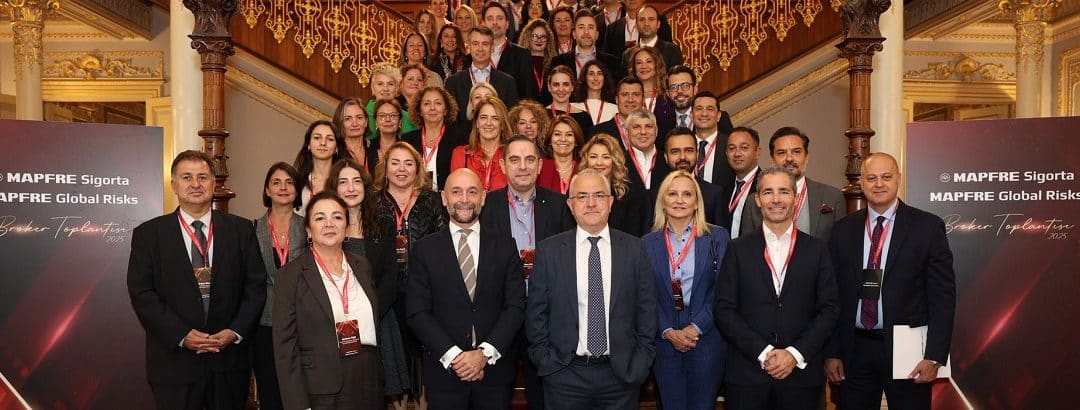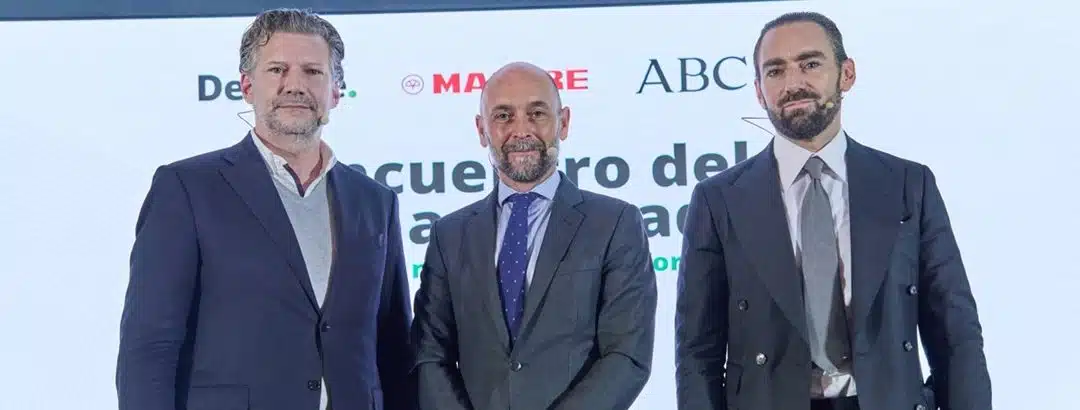Cristina Leon Vera | 19/09/2024
The space ecosystem has become a crucial pillar for communication and, consequently, for economic, social, and technological progress. This field has opened up to the private sector, creating new opportunities and challenges for the insurance industry.
The space industry has advanced rapidly ever since the historic launch of Sputnik in 1957. Satellites have revolutionized global communication, becoming an essential component of telecommunications infrastructure. However, access to space remains expensive and complex, presenting technical obstacles that must be overcome to achieve even more ambitious goals.
The round table discussion “The Space Sector as a Driver of Innovation,” held during the 29th MAPFRE International Global Risks Seminar, offered a detailed overview of the challenges and opportunities facing this sector. Moderated by Cristina Quintero, Deputy Director of Aviation and Transport at MAPFRE Global Risks, the event featured the participation of leading experts Miguel Ángel Panduro, CEO of Hispasat, and Miguel Ángel García, Managing Director of Hisdesat.
During his presentation, Miguel Ángel García explained that “a satellite is a spacecraft that carries goods, services, and sometimes people, and is composed of the bus and the payload,” highlighting the diverse applications of satellites in telecommunications, such as Earth observation, navigation, scientific research and defense.
The space sector has been a pioneer in developing advanced technologies for the operation and functionality of satellites. García detailed the use of “plasma propulsion and nuclear reactors for missions beyond the solar system,” highlighting the ongoing innovation in these technologies. These technologies enable satellites to operate efficiently and reliably, even under the most extreme conditions of space.
A new paradigm
 The entry of the private sector has revolutionized the space market. Miguel Ángel Panduro, CEO of Hispasat, cited prominent figures such as Elon Musk and Jeff Bezos, who have invested significantly and driven initiatives such as the Starship and Kuiper constellation projects. This dynamic has led to a global consolidation of satellite communications, which is forcing traditional operators to reassess their strategies and adapt to a more competitive and dynamic environment.
The entry of the private sector has revolutionized the space market. Miguel Ángel Panduro, CEO of Hispasat, cited prominent figures such as Elon Musk and Jeff Bezos, who have invested significantly and driven initiatives such as the Starship and Kuiper constellation projects. This dynamic has led to a global consolidation of satellite communications, which is forcing traditional operators to reassess their strategies and adapt to a more competitive and dynamic environment.
Meanwhile, Artificial Intelligence (AI) is beginning to play a role in the operation of space infrastructures, though its adoption still faces challenges. The Managing Director of Hisdesat noted that “AI has not yet achieved a failure rate suitable for implementation in critical space infrastructure control systems.” However, AI is currently being used effectively in data post-processing tasks, such as detecting ships and oil spills at sea using radar imagery. As Artificial Intelligence evolves and achieves reliability levels of 99.99%, it’s expected to have a transformative impact on the space sector.
Experts agreed on the need to overcome traditionally conservative attitudes and instead adopt innovative approaches in a competitive environment. Miguel Ángel Panduro emphasized the need to be more daring and willing to take risks to drive progress, underscoring the pivotal role of technology.
Technological advances and new projects
Among the notable advancements discussed at the round table, the Amazonas Nexus satellite was highlighted as a prime example of innovation. The Managing Director at Hispasat noted that “the Amazonas Nexus is a much more competitive satellite, with a cost per megabit per second that has been reduced to one-eighth of the previous rate.” This satellite not only enhances connectivity in remote areas but also introduces innovations in business models, including agreements to provide services to Greenland and the U.S. Department of Defense.
Another project mentioned was the SpainSat NG satellites, which will be launched soon (end of 2024 and 2025). Miguel Ángel García explained that “these software-defined satellites enable real-time adjustments in configuration and coverage, which offers unprecedented flexibility.” Equipped with cutting-edge technologies developed in Spain, these satellites are designed to address national defense and security needs while also serving international allies.
The antennas employed are among Europe’s most advanced, representing a significant national achievement. The collaboration between the European Space Agency, various Spanish ministries, and Hisdesat has been pivotal in positioning Spain at the forefront of space technology. The Ministry of Industry is funding the satellite’s construction, while the Ministry of Science and Innovation is involved in the project’s most innovative aspects. Over 45% of these satellites have been developed in Spain, strengthening the Spanish space ecosystem and establishing unique global capabilities.
Challenges and opportunities for the insurance world
The insurance industry faces unique challenges in the space field. This is largely due to the high claims level seen in recent years. Miguel Angel Panduro suggested that “the entry of new players and the assumption of greater risks have contributed to this trend.” He underlined the importance of differentiating between clients according to their past history and their practices in mitigating risks. Close collaboration with insurance companies such as MAPFRE is essential to ensure the success of future missions.
 Miguel Ángel García also addressed the current risks and challenges in space, noting that the space environment has undergone a radical transformation over the past six years. The significant increase in the number of satellites, including over 6,000 Starlink spacecraft in low Earth orbit, has raised concerns about sustainability and space congestion. García emphasized the urgent need to establish international space regulations and stressed the importance of properly decommissioning satellites at the end of their operational lives to prevent hazards.
Miguel Ángel García also addressed the current risks and challenges in space, noting that the space environment has undergone a radical transformation over the past six years. The significant increase in the number of satellites, including over 6,000 Starlink spacecraft in low Earth orbit, has raised concerns about sustainability and space congestion. García emphasized the urgent need to establish international space regulations and stressed the importance of properly decommissioning satellites at the end of their operational lives to prevent hazards.
Despite these challenges, the space industry remains a key driver of innovation and progress across many disciplines. Engaging the private sector, adopting new technologies and collaborating with the insurance industry are crucial for tackling current challenges and seizing the promising opportunities in space exploration and utilization.
If you want to hear how the speakers in this article delivered their remarks in Málaga, watch the video of the presentation “The Space Sector as a Driver of Innovation”.





